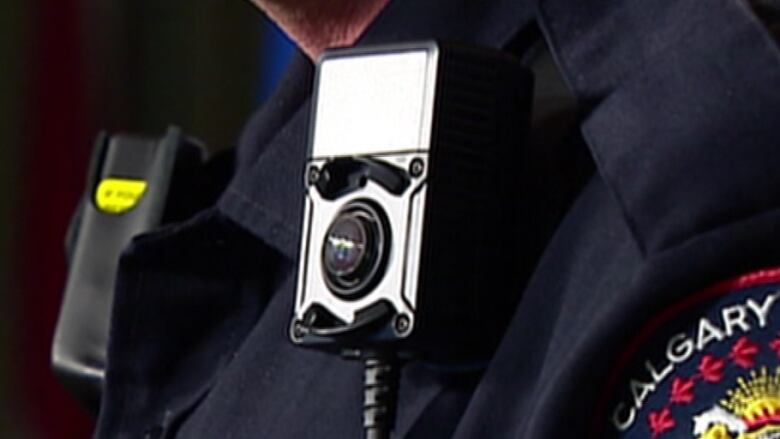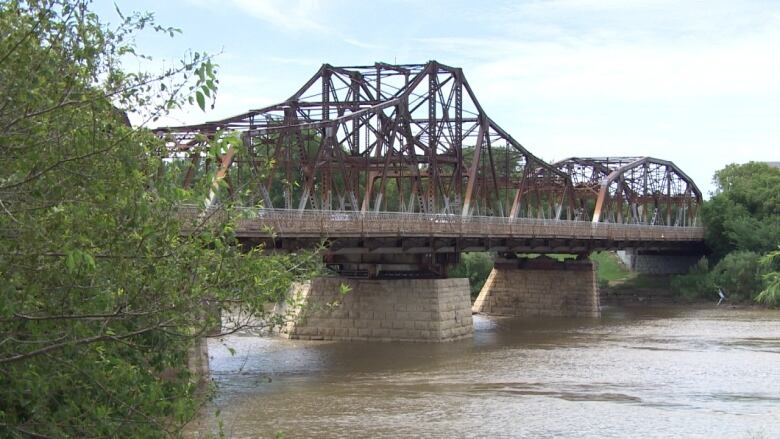No body cameras for cops; more surveillance cameras for transit
5 plans embedded within Winnipeg's budget for $2017

You've heard about the property-tax hike. You know Portage & Main won't be reopened.
Here are five other plans embedded in Winnipeg's $1.08-billion spending plan for next year, also known as the the 2017 budget:
1. No body cameras for cops
When the Winnipeg Police Service put together itswish list for 2016, the police budget included a $1-million pilot project that would have seen some officers wear body cameras.
That project was scrappedin March as partan effort to shave $2.45 million from the police budget and avoid the prospect of police layoffs.
- Winnipeg police OK body-worn camera pilot project
- Winnipeg police face $2.45M budget shortfall for 2016, board confirms
There are noplans to resurrect the body-camera pilot project. There's no money for the body cameras in either the 2017 capital budget or the five-year capital forecast, which loosely plans city spending on equipment through the end of 2022.
2. More camerasfor buses
Winnipeg Transit will spend $345,000 this year on additional video-surveillance cameras on the left side of bus exteriors as well as inside buses.
The left-hand cameras will cover blind spots and help settle disputes over accidents, said John Callahan, president of the Amalgamated Transit Union Local 1505. He said he would prefer to see live cameras to help prevent collisions.
There already are fivesurveillance cameras inside buses, Callahan said.
"They've captured assaults. They've captured all kinds ofactivityon buses. They add some sort of security, but unfortunately it'safter thefact," he said.
3. No plans to further expand rapid transit
The 2016 budget set aside $2.5 million to plan future rapid-transit corridors such as the East Transitway, the next priority on the city's bus-corridor wish list. A study is underway to determine the best route to carry buses between downtown and Transcona.
The 2018-2022 budget forecast, however, predicts the city won't spend another penny on the eastern corridor. This suggests construction won't begin before 2023.
That will make it even more difficult for Mayor Brian Bowman to fulfill his pledge to complete six rapid-transit corridors by 2030.

In 2011, Winnipeg's planners designated the replacement of the Louise Bridge as one of the city top transportation-infrastructure priorities. Today, the replacement of this 106-year-oldRed River crossing is one of only two of those priorities that is not underway. The other is the Marion Street widening.
In 2016, the city set aside $500,000 for preliminary Louise Bridge-replacement planning. But the project has disappeared from the 2017 budget as wellthe 2018-22 capital forecast.
The East Transitway study should determine where a new Louise Bridge will go and whether it will servedouble-duty as a waterway crossing for the future bus corridor. But without any money in the forecast to replace the bridge, the city runs the risk of getting caught flat-footed if the existing span has to close.
Charleswood-Tuxedo Coun. Marty Morantz, the city's new public works chair, refused to comment on the exclusion of the bridge from the budget.
5. $1.8 million for terra incognita
The 2017 budget sets aside $1.8 million for "land acquisition for general unspecified purposes."
This is money for land the city might have to buy.
"This provides for the acquisition of properties which are unforeseen at this time," the budget explains.
It also provides a cushion in case the city doesn't have to buy any mystery land at all.












_(720p).jpg)


 OFFICIAL HD MUSIC VIDEO.jpg)
.jpg)



























































































